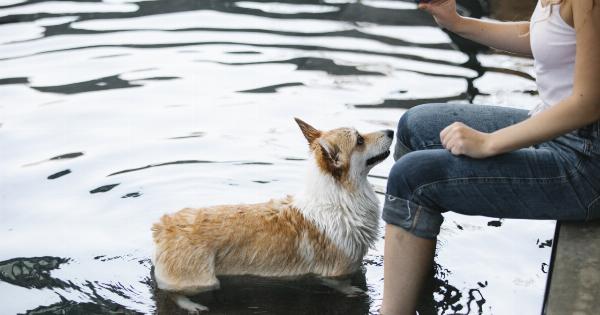Are you thinking about taking your furry friend for a dip in the pool or planning a beach day with them? Swimming is an excellent exercise for dogs as it helps strengthen their muscles, improve their cardiovascular health, and keep them cool in hot weather. However, before jumping in, there are some essential things you should know to ensure a safe and enjoyable experience for you and your pet.
1. Introduce your dog to water gradually
Not all dogs are natural swimmers, so it’s essential to introduce your pet to water slowly. Start by letting them explore shallow water first. Encourage them to step in and out, and show them that the water is not scary.
Reward their bravery with praises and treats. If your dog shows signs of fear or anxiety, do not force them further and try again another day.
2. Consider your dog’s breed
Some dog breeds are built for swimming, while others are not. Breeds like retrievers, spaniels, and water dogs have webbed feet, which makes them excellent swimmers.
On the other hand, flat-faced breeds, such as pugs and bulldogs, may not be suitable for swimming due to their short snouts, which can cause breathing difficulties. If you’re unsure if your dog can swim, consult your veterinarian.
3. Use a life jacket
Even if your dog is a strong swimmer, using a life jacket is always a good idea. A life jacket ensures that your pet can stay afloat even if they get tired or encounter strong currents.
Make sure the life jacket fits your dog well and is comfortable to wear.
4. Check the water quality
Before letting your dog dive in, check the water quality. Avoid swimming in stagnant water, which can harbor harmful bacteria and parasites.
Also, be wary of strong currents, waves, and underwater obstacles like rocks and tree branches that can injure your dog.
5. Supervise your dog at all times
Always keep an eye on your dog while they are swimming. Even the most experienced swimmers can get into trouble, and you want to be there to help them if needed.
Also, avoid letting your dog swim without supervision in pools that do not have a shallow end or easy exit point.
6. Rinse your dog after swimming
After swimming, rinse your dog thoroughly with freshwater to remove any salt, chlorine, or debris that may be clinging to their fur. This will prevent skin irritation and keep their coat looking healthy.
Also, dry your dog’s ears thoroughly to prevent infections.
7. Train your dog to exit the water safely
Teach your dog how to exit the water safely. If you’re swimming in a pool, show them where the steps are and teach them to use them. For open water, teach your dog to swim back to the entry point or use a ramp or ladder that you bring with you.
8. Be respectful of other swimmers
When swimming with your dog in public areas, be respectful of other swimmers. Not all people are comfortable around dogs, and some may have allergies or fears.
Keep your dog on a leash until you get to the swimming area, and avoid letting them jump on or bother others.
9. Be prepared for emergencies
Emergencies can happen when least expected, so it’s essential to be prepared. Bring a first aid kit, your dog’s medication, and a phone with emergency numbers in case of an accident.
Also, learn basic pet CPR techniques so you can act quickly in case of an emergency.
10. Know when to call it a day
Sometimes, even if your dog loves swimming, they may get tired or overwhelmed. Do not push your pet beyond their limits and know when to call it a day.
If your dog appears to be excessively tired or starts shivering, it’s time to take a break and let them rest. Swimming should be a pleasant experience for both you and your pet.






























